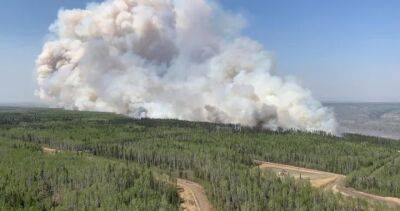
globalnews.ca
37%
493
Alberta wildfires: Grande Prairie residents prepare in case they need to flee
dozens of active wildfires burning hundreds of thousands of square kilometres across Alberta.Hot weather in the forecast has prompted some residents of Grande Prairie to prepare to leave as a wildfire burns outside the city.“If a person looks out, the kids and I are playing in the yard here and everything just seems normal, but we are fully aware that there is still a wildfire,” said Brandon Wilson, who lives just two kilometres outside of the area currently under evacuation order.The most up-to-date evacuation information can be found on the Alberta Emergency Alerts website.Wilson said when evacuations first started last week, there were long lines at gas stations in the city.He said he has put together essentials, especially for his kids, in case the family needs to leave the area on short notice.“We have a couple options and if we had to move quickly, we could,” he said, adding his family could stay in a camping trailer if needed.It’s a case of hoping for the best but preparing for the worst, he said.“I think there’s a lot of potential for this fire to get carried away still.”The upcoming hot weather, with highs in the high 20s and low 30s, is expected to fan the flames over the next few days, said Trevor Grant, the fire chief of County of Grande Prairie Fire Services.“There are still lots of smolders and areas that are unseen within the fire perimeter that may rekindle or flare up with the hot, dry conditions that could extend and cause us some more issues.”Grant said he didn’t want to speculate on what could happen over the weekend.“It all depends on what we can accomplish through the next few days and what the weather does,” he said.Bob Marshall, the reeve of the County of Grande Prairie, said the fire has moved